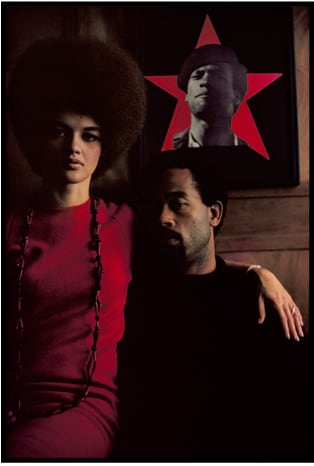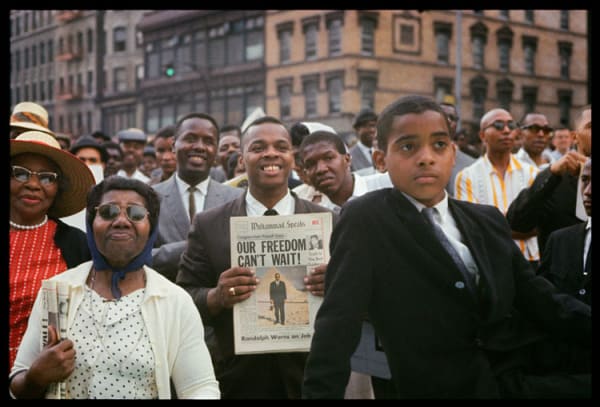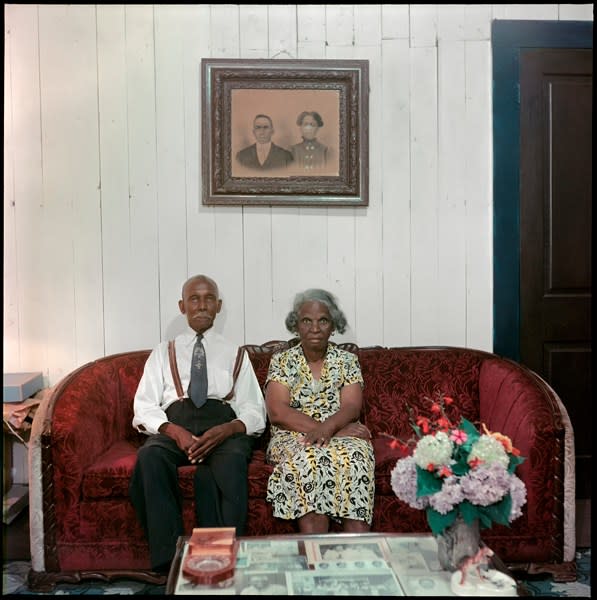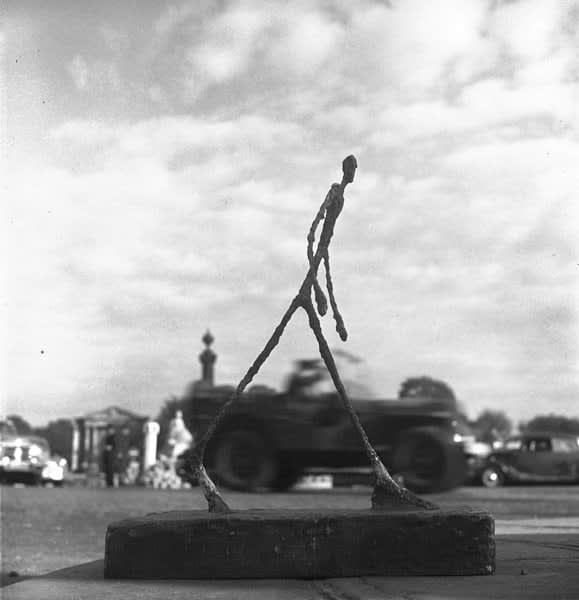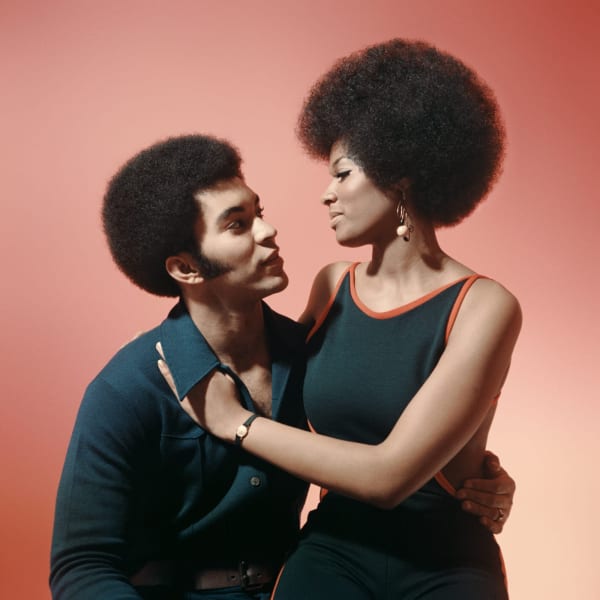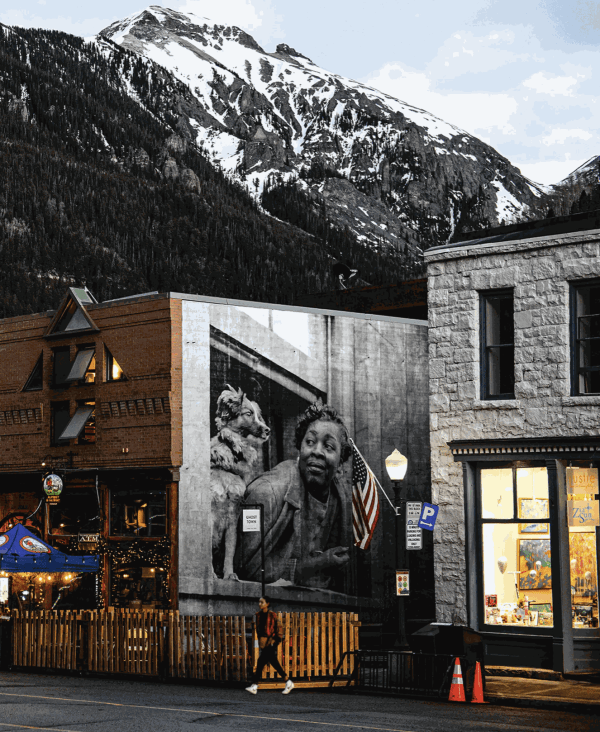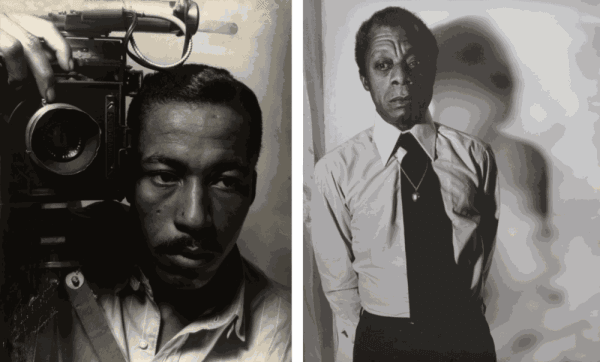Gordon Parks
Overview
Gordon Parks (b. 1912, Fort Scott, KS, d. 2006, New York, NY) was one of the seminal figures of twentieth century photography. A humanitarian with a deep commitment to social justice, he left behind a body of work that documents many of the most important aspects of American culture from the early 1940s up until his death in 2006, with a focus on race relations, poverty, civil rights, and urban life. In addition, Parks was also a celebrated composer, author and filmmaker who interacted with many of the most prominent people of his ear- from politicians and artists to celebrities and athletes.
Parks was born into poverty in Fort Scott, Kansas in 1912, the youngest of fifteen children. He worked several odd jobs until he bought a camera at a Pawn Shop in 1937 in Seattle and was hired to photograph fashion at a department store in Minneapolis. In 1942 Parks received a photography fellowship from the Farm Security Administration, succeeding Dorothea Lange among others. While at the F.S.A., Parks created American Gothic, now known as one of his signature images, in which he shows Ella Watson, a cleaning women, holding a mop and broom, standing in front of an American flag. The image makes a poignant commentary on social injustice whilst referencing Grant Wood’s celebrated painting American Gothic which it is also named after. He became a freelance photographer working for Vogue as well as publishing two books, Flash Photography (1947) and Camera Portraits: Techniques and Principles of Documentary Portraiture (1948). In 1948 Parks was hired by Life magazine to do a photographic essay on Harlem gang leader, Red Jackson, which led to a permanent position at Life, where he worked for twenty years. Parks developed his skills as a composer and author and in 1969 he became the first African American to direct a major motion picture, The Learning Tree, based on his best-selling novel and in 1971 he directed Shaft. A true Renaissance man, Gordon Parks passed away in 2006.
Gordon Parks’ I AM YOU is a limited-edition portfolio of 12 little-known works from the Civil Rights Era. As the world reacts to upheavals in global politics, Parks’ civil rights photo essays are especially relevant. Parks work captures the turmoil, unrest, and the human emotion of another tumultuous time in world history. The Civil Rights Movement of the 1950s and 1960s was a reaction to political and cultural divides, and the present provides striking similarities. The current struggles in the U.S. and through the world for racial equality, freedom of religion, open immigration, women’s right and LGBTQ equality echo the activism portrayed in Parks’ photographs.
Parks currently has solo exhibitions at the J. Paul Getty Museum (The Flavio Story), the Amon Carter Museum of American Art (The New Tide, Early Work 1940-1950, which travelled from the National Gallery of Art, Washington, D.C), and an upcoming solo exhibition at the Nelson-Atkins Museum of Art (Gordon Parks X Muhammad Ali, The Image of a Champion 1966/1970). Recently, Gordon Parks: I Am You, Selected Works 1942-1978 was exhibited at Fotografiemuseum, with additional solo exhibitions at C/O Berlin, Kunstfoyer Munich, and a selection of American Museums over the next three years. Parks is in major museum collections around the globe including MoMA, the Metropolitan Museum of Art, the Whitney Museum of American Art, The Art Institute of Chicago, and the J. Paul Getty Museum.
Works
-
 Eldridge Cleaver and His Wife, Kathleen, Algiers, Algeria, 1970
Eldridge Cleaver and His Wife, Kathleen, Algiers, Algeria, 1970 -
 Untitled, London, England, 1966
Untitled, London, England, 1966 -
 Black Muslim Rally, Harlem, New York, 1963
Black Muslim Rally, Harlem, New York, 1963 -
 Untitled Harlem NY 1963 (Do Not Cross) , 1963
Untitled Harlem NY 1963 (Do Not Cross) , 1963 -
 Untitled, Fort Scott, Kansas, 1963
Untitled, Fort Scott, Kansas, 1963 -
 Untitled, Harlem, New York, 1963
Untitled, Harlem, New York, 1963 -
 Mr. and Mrs. Albert Thornton, Mobile, Alabama, 1956
Mr. and Mrs. Albert Thornton, Mobile, Alabama, 1956 -
 Untitled, Shady Grove, Alabama, 1956
Untitled, Shady Grove, Alabama, 1956 -
 Untitled, Chicago, Illinois, 1953
Untitled, Chicago, Illinois, 1953 -
 Emerging Man, Harlem, New York, 1952
Emerging Man, Harlem, New York, 1952 -
 Boys Waiting for Metro, Paris, France, 1951
Boys Waiting for Metro, Paris, France, 1951 -
 Untitled, Paris, France, 1951
Untitled, Paris, France, 1951 -
 Untitled, Paris, France, 1951
Untitled, Paris, France, 1951 -
 Comtesse Alain de la Falaise, Paris, France, 1949
Comtesse Alain de la Falaise, Paris, France, 1949 -
 Untitled, 1941
Untitled, 1941 -
 Doll Test, Harlem, New York, 1947
Doll Test, Harlem, New York, 1947 -
 Untitled, Washington, D.C. (from I Am You Series), 1963
Untitled, Washington, D.C. (from I Am You Series), 1963 -
 Untitled, Alabama, 1956
Untitled, Alabama, 1956 -
 Untitled, Shady Grove, Alabama, 1956
Untitled, Shady Grove, Alabama, 1956
Press
-

Jenkins Johnson Gallery gives us ‘Infinite Hope’ with Black photographer celebration
Tony Bravo, Datebook, February 13, 2025 -

Black photographers speak hope to power in SF exhibit
Max Blue, San Francisco Examiner , February 11, 2025 -

Infinite Hope is a powerful celebration of Black excellence and humanity
Tallulah Baird, The Daily Californian , February 3, 2025 -

Here Are 11 Exhibitions You Can't Miss While in San Francisco For FOG
When you have a moment to step outside the fair, make sure to put one (or all) of these shows on your to-do list.Katie Kern, Cultured, January 20, 2025 -

Must See Art Exhibitions Closing in January 2025
Visit these Eleven Exhibitions Before They CloseThe Arts District, January 2, 2025 -

GET LIT! Gordon Parks' Latest Photobook and Other Black Authors to Read this December
Delaina Dixon, EBONY, December 3, 2024 -

Big ideas: a celebration of French artist JR’s installations – in pictures
Kathryn Bromwich, The Guardian, September 14, 2024 -

Gordon Parks exhibit elicits multi-sensorial experience of his trailblazing career
Hailey Roy, The Daily Orange, September 1, 2024 -

Reframing Gordon Parks and James Baldwin
Exhibits at The National Gallery and National Portrait Gallery Offer a New Conversation Between Two Iconic Artists and ActivistsColey Grey, BmoreArt, August 28, 2024 -

Four Great Photography Books Where Words Add Power to Pictures
New collections by Gordon Parks, Platon, Peter van Agtmael and Myriam Boulos reveal when you need to tell as well as show.Arthur Lubow, The New York Times, August 3, 2024 -

Here Are 5 of the Best Booths at Frieze New York, From Metaphysical Landscapes to Playful Ceramics and a Revelatory Redi
Melissa Smith, artnet news, May 19, 2022
Exhibitions
-

Infinite Hope
21 Jan - 1 Mar 2025January 21 - March 01, 2025 Opening Reception: Tuesday, January 21, 2025, 5:00PM-8:00PM Artists Talk 6:30pm, moderated by Key Jo Lee, Chief of Curatorial Affairs and Public Programs, Museum of...Read more -

The Culture From Which I Sprang
13 Jul - 21 Sep 2024Jenkins Johnson Gallery announces its West Coast exhibition The Culture From Which I Sprang , commemorating the 60th Anniversary of the Civil Rights Act of 1964. It features work by...Read more -

Summertime...
Wesaam Al-Badry, Kevin Cole, Dewey Crumpler, Alex Jackson, Wycliffe Mundopa, Gordon Parks, and Raelis Vasquez 8 Jul - 25 Aug 2023Jenkins Johnson Gallery is pleased to announce Summertime..., a cross-generational and multi-cultural exhibition featuring Wesaam Al-Badry, Kevin Cole, Dewey Crumpler, Alex Jackson, Wycliffe Mundopa, Gordon Parks, and Raelis Vasquez. Works...Read more -

Reflections
Michael Eastman, Aïda Muluneh, Gordon Parks, Ming Smith, and Lissette Solórzano 11 Mar - 3 Apr 2021Jenkins Johnson Gallery is pleased to present Reflections , a group exhibition featuring works by Michael Eastman, Aïda Muluneh, Gordon Parks, Ming Smith, and Lissette Solórzano. This collection of photography...Read more -

Summertime...
Wesaam Al-Badry, Ben Aronson, Scott Fraser, Julia Fullerton-Batten, Hendrik Kerstens, Aida Muluneh, Blessing Ngobeni, and Gordon Parks 6 Jun - 30 Aug 2019Jenkins Johnson Gallery is pleased to present Summertime... , a group exhibition featuring artists working across disciplines. This international show brings together emerging artists with more established ones, creating a...Read more -

Winter Selections
15 Jan - 9 Mar 2019Jenkins Johnson Gallery is pleased to present Winter Selections , a collection of artworks by emerging artists of color in dialogue with works by prominent artists of diverse backgrounds. In...Read more -

Summertime...
Harlan Mack, Devin N. Morris, Enrico Riley, and Kennedy Yanko from Jenkins Johnson Projects with works by Wesaam Al-Badry, Ben Aronson, Julia Fullerton-Batten, Lalla Essaydi, Ken Graves & Eva Lipman, Aida Muluneh, Blessing Ngobeni, Nnenna Okore, Paccarik 18 Jul - 15 Sep 2018Jenkins Johnson Gallery is pleased to announce Summertime… , a cross-generational exhibition that brings artists from Jenkins Johnson Projects, Brooklyn into conversation with our San Francisco Gallery. This international show...Read more -

Spring Selections
Lalla Essaydi, Aida Muluneh, Nnenna Okore, Julia Fullerton-Batten, Wesaam Al-Badry, Blessing Ngobeni, Omar Victor Diop, Gordon Parks, Hendrik Kerstens, and Julian Opie 22 Mar - 12 May 2018In celebration of Women’s History Month, Jenkins Johnson Gallery is pleased to announce Spring Selections , an exhibition of contemporary works by international artists contributing to the advancement of women's...Read more -

Legacy
Gordon Parks 2 Nov - 9 Dec 2017J enkins Johnson Gallery is pleased to announce Gordon Parks: Legacy ; a multi-media exhibition exploring the relationships between the works of Gordon Parks and the works of artists he...Read more -

Summertime
27 Jul - 23 Sep 2017Jenkins Johnson Gallery, San Francisco is pleased to present Summertime , a group exhibition featuring socially informed works by artists working in a variety of disciplines including painting, photography, sculpture,...Read more -

Humanity Today
Sadie Barnette Victor Ehikhamenor, Aida Muluneh, Carlos Javier Ortiz, Blessing Ngobeni, Gordon Parks, and Lissette Solórzano 2 Feb - 11 Mar 2017Jenkins Johnson Gallery, San Francisco is pleased to announce Humanity Today , a group exhibition on display from February 2 through March 11, 2017. The exhibition highlights current tensions surrounding...Read more -

Summertime...
14 Jul - 3 Sep 2016Read more -

Higher Ground
Gordon Parks 4 Feb - 2 Apr 2016Jenkins Johnson Gallery, San Francisco is pleased to present Gordon Parks: Higher Ground, a solo exhibition of over sixty works by one of the most important photographers of the 20th...Read more -

Director's Pick
8 Jan - 28 Mar 2016Jenkins Johnson Gallery, San Francisco is pleased to present Director’s Pick, a group exhibition that showcases recent work by gallery artists and introduces two artists to the gallery—Melanie Pullen and...Read more
Art Fairs
-
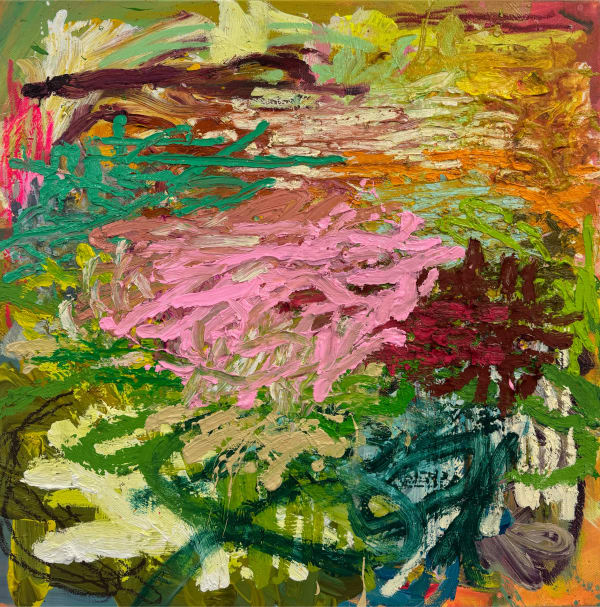
FOG Design + Art 2025
23 - 26 Jan 2025Jenkins Johnson is pleased to participate in FOG Design+Art 2025. Join us in Booth 107 for the Preview Gala on Wednesday January 22 . The...Read more -
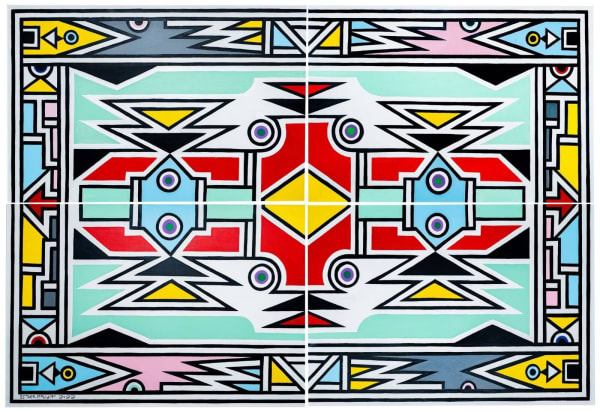
Art Basel Miami Beach 2024
6 - 8 Dec 2024Jenkins Johnson Gallery is pleased to participate in the 2024 edition of Art Basel Miami Beach . This year is our largest and most ambitious...Read more -

Paris Photo 2024
Booth B10 7 - 10 Nov 2024Jenkins Johnson Gallery is pleased to participate in the 27th edition of Paris Photo with, “To Paris with Love,” highlighting artists from the 1950s to...Read more -

Art Basel 2024
Booth C12 10 - 16 Jun 2024Jenkins Johnson Gallery presents works by Patrick Alston, Mustafa Ali Clayton, Dewey Crumpler, Lisa Corinne Davis, David Driskell, Wadsworth Jarrell, Mary Lovelace O’Neal, Ming Smith,...Read more -

Art Basel | Miami Beach
Miami, FL 6 - 10 Dec 2023Jenkins Johnson Gallery will participate in Art Basel Miami Beach, December 8 - 10, 2023 Booth B31. We will feature artists that explore social and political issues of the African Diaspora by connecting past and current moments: Mary Lovelace O'Neal, Wadsworth Jarrell, Gordon Parks, Ming Smith, Patrick Alston, Adrian Burrell, Dewey Crumper, Lisa Corinne Davis, Violet Fields, Alex Jackson, Blessing Ngobeni, Gregory Rick, Enrico Riley, and Raelis Vasquez. Jenkins Johnson Gallery will be participating in the Kabinett sector with a solo presentation of works on paper by Mary Lovelace O'Neal, featuring her iconic Lampblack (1970's) and Desert Women (1990's) series. In the Lampblack drawings she layers black charcoal and pastel, allowing slivers of negative space to invade the surface. These drawings speak to her affair with an "uncluttered minimalist viewpoint", invoking both a cultural and aesthetic sentiment. In Desert Women series, Lovelace O'Neal portrays garments worn in the Sahara Desert in Egypt and the Atacama Desert in Chile. She studied with master printmaker James Lesene Wells and at The Robert Blackburn Printmaking Workshop. Lovelace O'Neal creates based on feeling and perception, forming moments of fleeting light. Her work is in museums including the Art Institute of Chicago, San Francisco Museum of Modern Art, Baltimore Museum, DeYoung Museum, and Brooklyn Museum. She has an upcoming solo exhibition at the San Francisco Museum of Modern Art in Spring 2024.Read more -
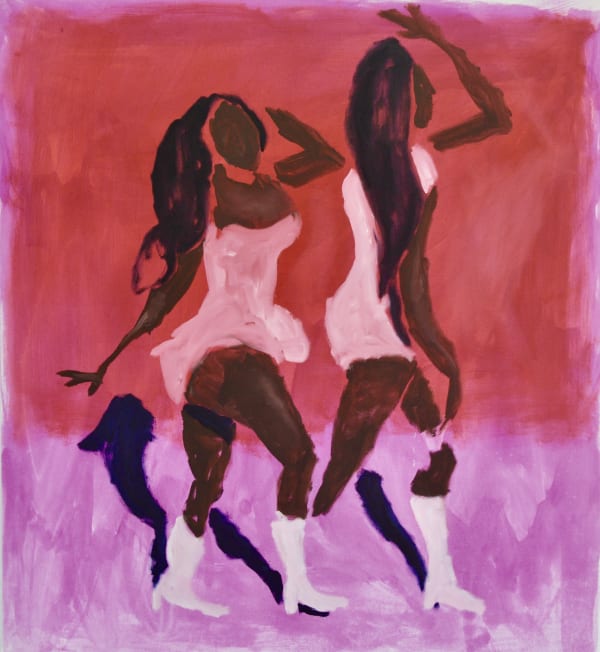
Frieze Los Angeles
Los Angeles, CA 16 - 19 Feb 2023Jenkins Johnson Gallery was pleased to participate in Frieze Los Angeles 2023 at Booth C8. We presented works by Patrick Alston, Lola Flash, Alex Jackson,...Read more -

Art Basel | Miami Beach
Miami, FL 29 Nov - 3 Dec 2022Jenkins Johnson Gallery were thrilled to participate in Art Basel Miami Beach. The fair took place at the Miami Beach Convention Center from November 29...Read more -

Art Basel
Basel, Switzerland 16 - 19 Jun 2022Jenkins Johnson Gallery exhibited at Art Basel,which occured June 16-19, 2022. We presented the works of Lisa Corinne Davis, Jae Jarrell, Wadsworth Jarrell, Gordon Parks,...Read more -

Frieze NY
New York, NY 18 - 22 May 2022Jenkins Johnson Gallery exhibited at Frieze New York, which occured May 18-22, 2022. We presented the works of Sydney Cain, Lisa Corinne Davis, Alex Jackson,...Read more -

Frieze Los Angeles
Los Angeles, CA 17 - 20 Feb 2022Jenkins Johnson Gallery exhibited at Frieze Los Angeles,which occured Feburary 17-20, 2022. We presented the works of Lisa Corinne Davis, Lola Flash, Alex Jackson, Wadsworth...Read more -

The Armory Show
New York, NY 9 - 12 Sep 2021Jenkins Johnson Gallery was pleased to participate in The Armory Show 2021 at the Javits Center from September 9th - 12th. We presented a selection...Read more -

Frieze New York
New York, NY 5 - 9 May 2021Jenkins Johnson presented artists who explore social and political issues of the Diaspora by bridging past and contemporary moments: Wadsworth Jarrell, Gordon Parks, Ming Smith,...Read more -

Art Basel Miami Beach
Miami Beach, FL 3 - 6 Dec 2020Jenkins Johnson presented artists who explore social and political issues of the Diaspora by linking past and contemporary moments. To strengthen this connection, we will...Read more -
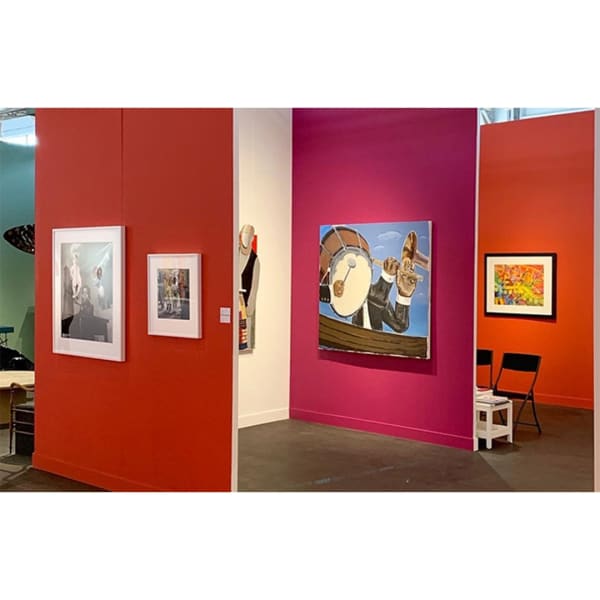
FOG Design + Art
San Francisco, CA 15 - 19 Jan 2020Jenkins Johnson Gallery is pleased to announce its participation in FOG Design + Art at Fort Mason Center, January 15-19, 2020 in Booth 304. We...Read more -

UNTITLED, Miami Beach
Miami Beach, FL 3 - 8 Dec 2019Jenkins Johnson Gallery is pleased to announce its participation in UNTITLED, Miami Beach, December 3-8, 2019 in Booth B29. This presentation will feature artists including...Read more -

The Photography Show presented by AIPAD
New York, NY 5 - 8 Apr 2018Jenkins Johnson Gallery is pleased to present the work of Wesaam Al-Badry, Devin N. Morris, Aida Muluneh, Blessing Ngobeni, Gordon Parks, and Mimi Plumb.Read more -

EXPO Chicago
Chicago, IL 13 - 17 Sep 2017Jenkins Johnson Gallery is pleased to announce its participation in Expo Chicago at Navy Pier, September 13–17, 2017 in booth 645. Jenkins Johnson will feature...Read more -
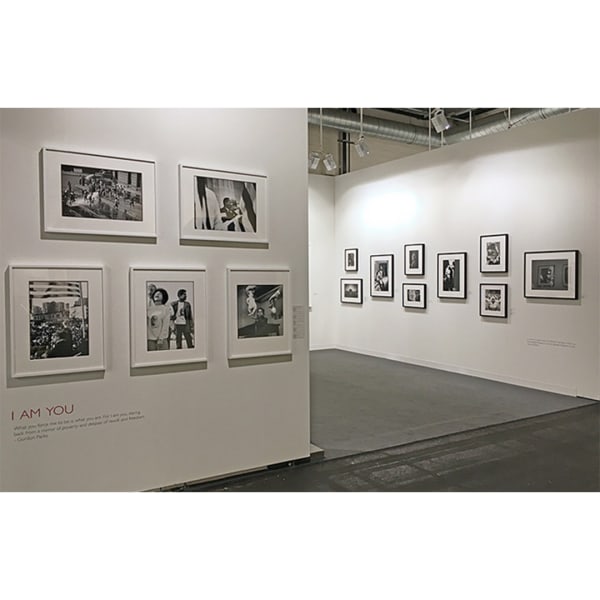
Art Basel
Basel, Switzerland 15 - 18 Jun 2017Jenkins Johnson Gallery is pleased to announce participation in Art Basel, Feature with a solo presentation of civil rights photographs by Gordon Parks, and Art...Read more -
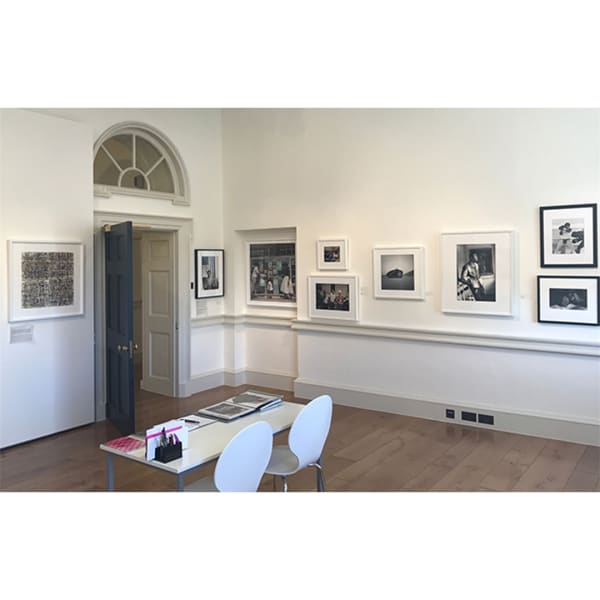
1:54 London
London, UK 5 - 9 Oct 2016Jenkins Johnson Gallery is pleased to announce its participation in 1:54 Contemporary African Art Fair London, 2016. We will present works by Sadie Barnette, Kenyatta...Read more -

Seattle Art Fair
Seattle, WA 4 - 7 Aug 2016Jenkins Johnson Gallery is pleased to announce our participation in the 2016 edition of the Seattle Art Fair. We will be presenting works by Omar...Read more -
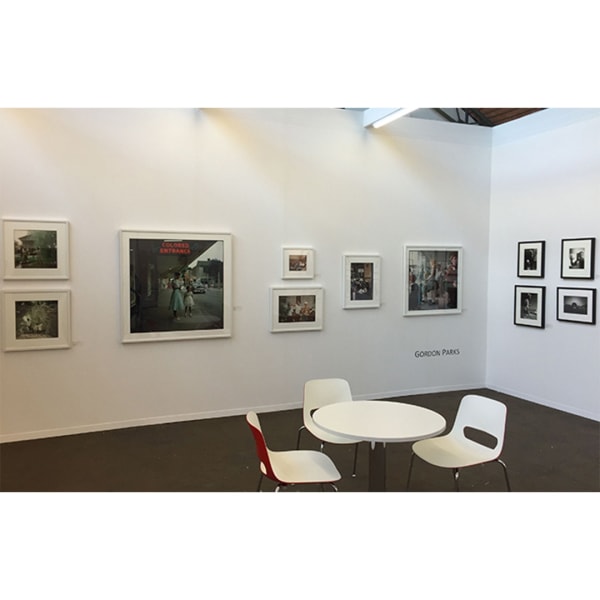
Art Brussels
Brussels, Belgium 21 - 24 Apr 2016Jenkins Johnson Gallery is pleased to announce our participation in Art Brussels. We will be presenting works by Gordon Parks and Hendrik Kerstens.Read more -

The Photography Show Presented by AIPAD
New York, NY 14 - 17 Apr 2016Jenkins Johnson Gallery is pleased to announce our participation in the 2016 edition of The Photography Show Presented by AIPAD. We will present a selection...Read more


